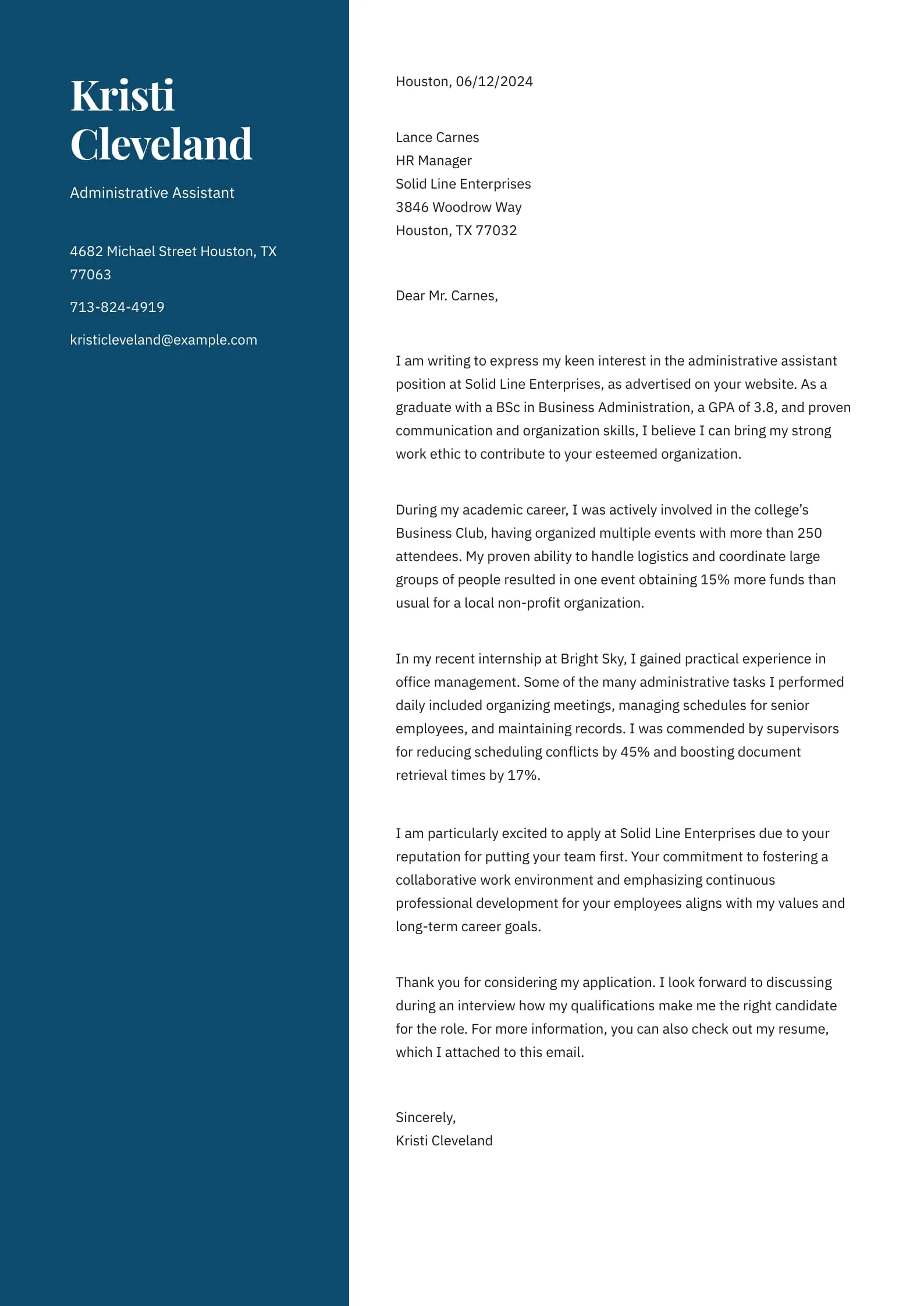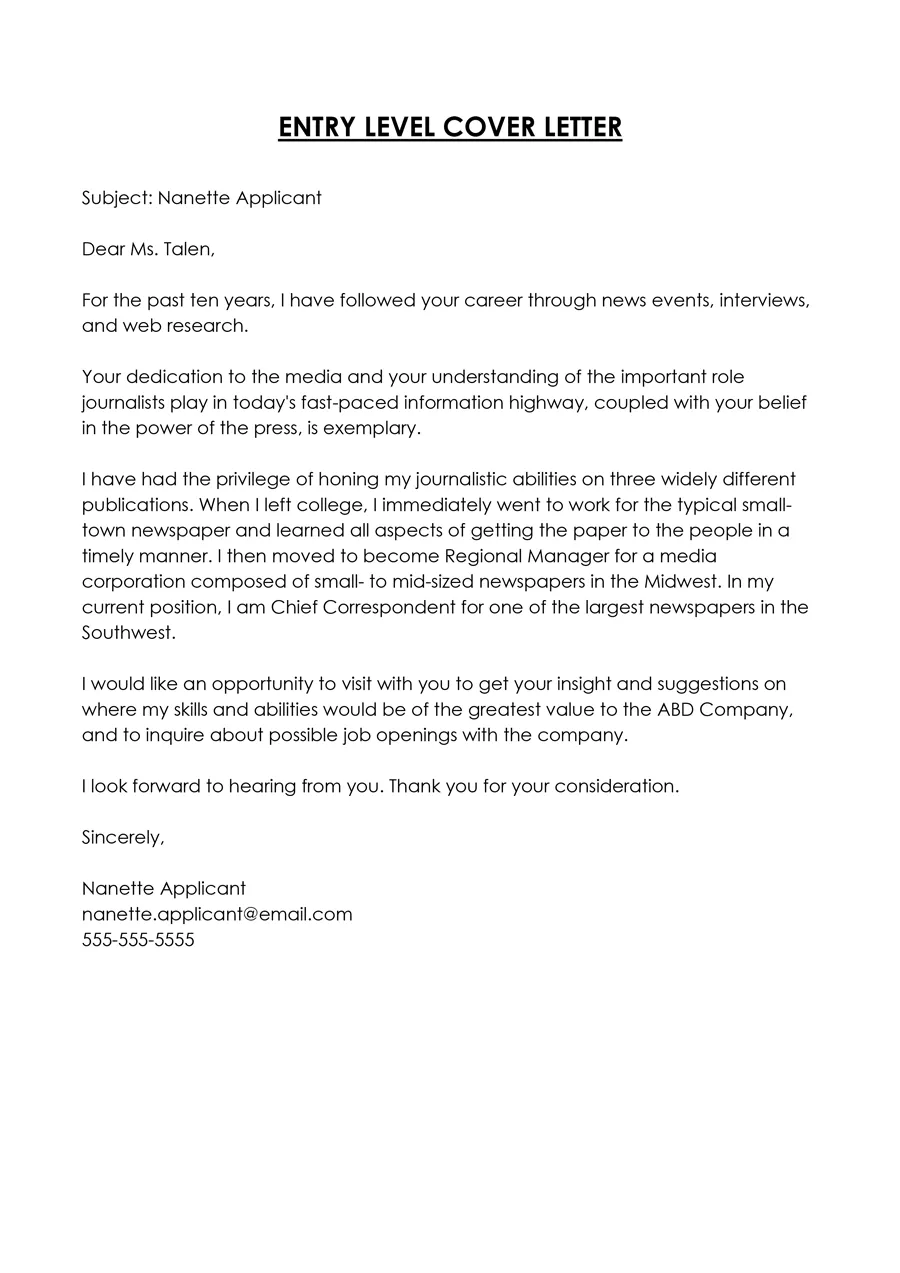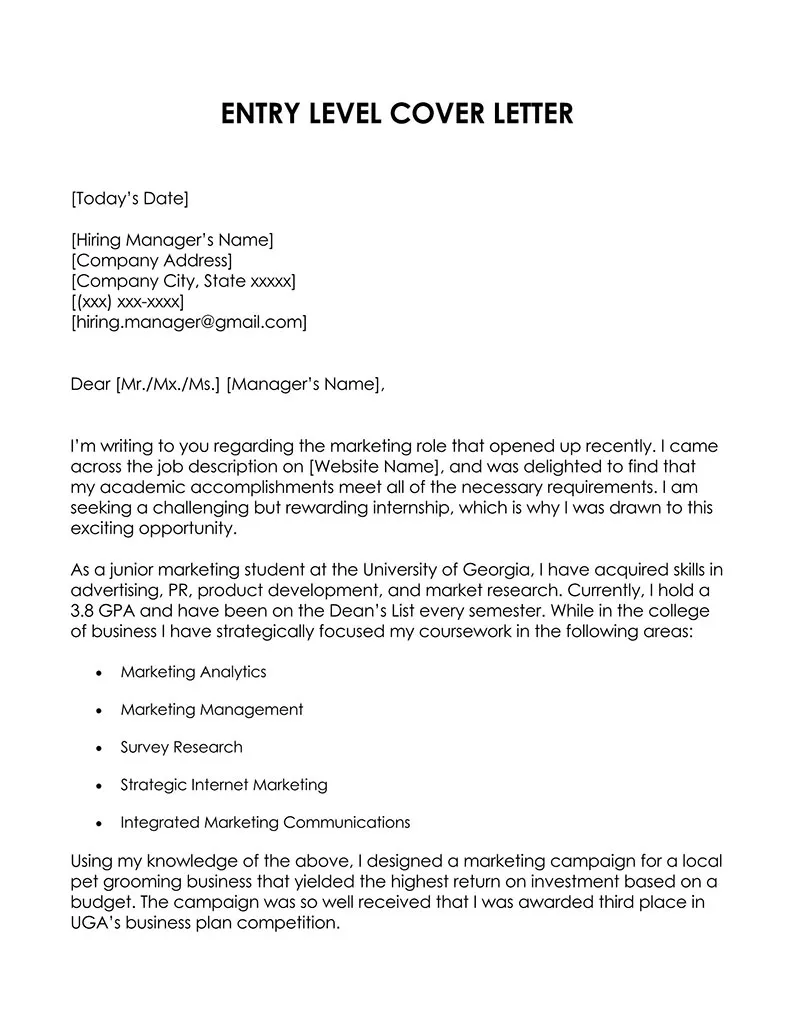Why Use Entry Level Cover Letter Templates?
Embarking on your career journey can feel overwhelming, especially when crafting the perfect cover letter. Entry level cover letter templates offer a streamlined solution, providing a solid foundation for your application and significantly increasing your chances of landing an interview. These templates are designed to address the common challenges faced by those new to the job market. They ensure that you present your skills and experiences effectively, even if you lack extensive professional experience, helping you make a strong first impression. The primary goal is to assist you to get over the line and get a chance to show your qualities in person.
Benefits of Using Templates
Utilizing entry level cover letter templates yields several key advantages. They serve as a framework to showcase your qualifications, experience, and personality to potential employers. Properly used, templates make the application process easier and more efficient. Furthermore, these templates offer a structured approach that guarantees all necessary elements, such as contact details, an engaging introduction, a skills section, and a compelling conclusion, are included.
Save Time and Effort

Time is of the essence in a job search, and cover letter templates save you valuable time by providing a pre-designed structure. Rather than starting from scratch, you can focus on personalizing the content to match the specific job and your unique qualifications. This allows you to submit more applications and increase your chances of securing interviews. Streamlining the process is always the best way to go and templates are a great start for a junior.
Ensure Professional Formatting
Professional formatting is critical for making a positive impression. Templates are pre-formatted with correct margins, fonts, and spacing, which can be extremely hard to do if you don’t have previous experience. This gives your cover letter a polished look, demonstrating attention to detail and professionalism. A well-formatted cover letter shows the employer you’re serious about the position and have taken the time to present yourself in the best light. This demonstrates that you possess the professionalism that companies seek.
Highlight Key Skills and Experience
Templates provide a structured way to highlight your relevant skills and experiences. They guide you to emphasize the qualifications that align with the job requirements, whether you are looking for the first job or have limited experience. This helps you stand out from other candidates by making your key strengths immediately apparent to the hiring manager. It helps potential employers quickly assess if your qualifications align with the job requirements.
Choosing the Right Entry Level Cover Letter Template

Consider Your Industry
Different industries may have different expectations for cover letter styles. For example, a creative field may allow for a more innovative design, while more conservative industries may require a more traditional format. Choosing a template that aligns with the industry norms shows that you understand the professional landscape. A template that fits the role helps you align with the company. This approach helps you to make a positive first impression.
Review Template Examples
Before selecting a template, review several examples to understand what works well. Pay attention to the layout, tone, and content of the templates. This can help you see how different templates address the specific challenges of writing an entry level cover letter. It is a good idea to go with the one that highlights your strengths the best and fits with the job role. Doing this ensures you choose one that feels comfortable and suits your style.
Template Customization Tips

Personalizing Your Cover Letter
Customization is key. While templates provide structure, they should be personalized to reflect your unique experiences and the specific job you are applying for. Take the time to tailor the content to match the job description. This also shows the employer that you are genuinely interested in the role and have considered the company’s needs. This extra effort shows that you’re dedicated to the role. Use your skills to make yourself stand out in the application pool.
Key Sections to Customize
Focus on customizing the key sections of the template. The opening paragraph should immediately grab the reader’s attention. Highlight your relevant skills and experiences in the body. This can include any projects you have done or related tasks you performed. The closing section should reiterate your enthusiasm and include a clear call to action. Customizing these sections shows that you’ve gone beyond the generic template and made a real effort to tailor your application to the job.
Tailoring to the Job Description

Carefully review the job description and incorporate the keywords and phrases used. Customize your cover letter to specifically address the requirements and demonstrate how your skills and experience align with them. If you want to show yourself as a perfect candidate, match your skills to what the employer is looking for. This shows the hiring manager that you understand the role and possess the qualifications they are seeking.
Essential Elements of an Entry Level Cover Letter
Contact Information
Start with your contact information. Include your full name, phone number, email address, and LinkedIn profile (if you have one). Make sure the contact details are accurate and up-to-date. This is the first thing the hiring manager will see, so it’s important that it is correct. This way, the hiring manager can easily reach you if they are interested in your profile and want to learn more about you. An incomplete cover letter might hurt your chances.
Opening Statement

Your opening statement is your first chance to grab the reader’s attention. State the position you are applying for and where you saw the job posting. Briefly explain why you are interested in the role and the company. This should be a concise and compelling introduction that sets the tone for the rest of your cover letter. This is your hook, so make sure it is strong and shows your enthusiasm for the job.
Skills and Experience Section
This section is where you highlight your relevant skills and experiences. Since you’re applying for an entry level position, focus on transferable skills gained from academics, extracurricular activities, volunteer work, or any previous part time jobs. Be specific and provide examples of how you’ve used these skills. This helps employers understand what you bring to the table, even without extensive professional experience.
Highlight Relevant Skills
Identify the skills that align with the job description. These can include both hard skills (e.g., software proficiency) and soft skills (e.g., communication, teamwork). Providing specific examples of how you have demonstrated these skills in the past will make your application more compelling. Make sure you choose the best skills and experience and showcase them in the best light. Emphasizing these skills is an excellent way to catch the recruiter’s attention.
Showcase Accomplishments

Even without professional experience, you can showcase your accomplishments. Think about any projects you have completed, awards you have received, or leadership roles you’ve held. Quantify your achievements whenever possible; for example, describe how you improved something. Quantifying your accomplishments provides concrete evidence of your abilities, making your application more persuasive and attractive.
Closing the Cover Letter
Express Enthusiasm and Gratitude
In your closing paragraph, reiterate your enthusiasm for the position and the company. Express your gratitude for the hiring manager’s time and consideration. This shows that you’re sincerely interested in the opportunity. Thanking the hiring manager adds a touch of professionalism. This final impression can significantly impact your application.
Call to Action
End with a clear call to action, such as inviting the hiring manager to contact you for an interview. Reiterate your availability for an interview. Make it easy for the hiring manager to take the next step. A clear call to action encourages them to move forward with your application. Encourage the hiring manager to contact you, and you’ll significantly increase your chances.
Formatting and Design Best Practices
Font Choices
Choose a professional and readable font. Common fonts include Arial, Calibri, and Times New Roman. Ensure the font size is appropriate for the job. The font should be easily readable and present a clear message. Fonts are also a subtle way to showcase professionalism. The selected font must be easy on the eyes and suitable for the job description.
Margins and Spacing
Maintain consistent margins (typically 1 inch on all sides) and use single or 1.15 line spacing. This ensures your cover letter is easy to read. It also presents a professional look. Proper spacing and margins also make your application more visually appealing. Correct margins and spacing make your cover letter visually balanced and easy to follow.
Proofreading and Editing
Proofread your cover letter multiple times for any typos or grammatical errors. Ask a friend or family member to review it as well. Spelling and grammar errors can damage your credibility, so it’s important to make sure your application is polished and professional. A well-proofread cover letter highlights your attention to detail, showing your competence and ability.
Common Mistakes to Avoid
Generic Content
Avoid using generic content that could apply to any job. Tailor your cover letter to the specific requirements of each position you apply for. Generic cover letters are quickly dismissed because they show a lack of interest. Customize your cover letter to the job. Always show you care for a specific opportunity and tailor your writing accordingly.
Typos and Grammatical Errors
Typos and grammatical errors can make you appear careless or unprofessional. Always proofread your cover letter multiple times before submitting it. Proofreading is the most important step, so review the document with the utmost attention. Correct spelling and grammar are essential, so use available tools and review it manually.
Overly Long Cover Letters
Keep your cover letter concise and to the point. Aim for one page; hiring managers often don’t have time to read long documents. Be direct and showcase your accomplishments. Getting to the point quickly will catch the employer’s attention. Keep it brief while providing all the critical details.
Where to Find Entry Level Cover Letter Templates
Online Resources
Several online resources offer free and paid cover letter templates. Websites like Zety, Resume.io, and Canva provide a wide variety of templates. These platforms offer pre-designed templates. You can customize the content and design. They provide tools that ensure formatting and professional presentation. These sites can help you find suitable templates.
Professional Template Providers
If you want more professional designs and features, consider using premium template providers. These providers offer a range of templates. They often have advanced customization options. Premium templates may cost money, but are a worthwhile investment. They provide great value when searching for a job. Professional templates often include design and support from career experts.
